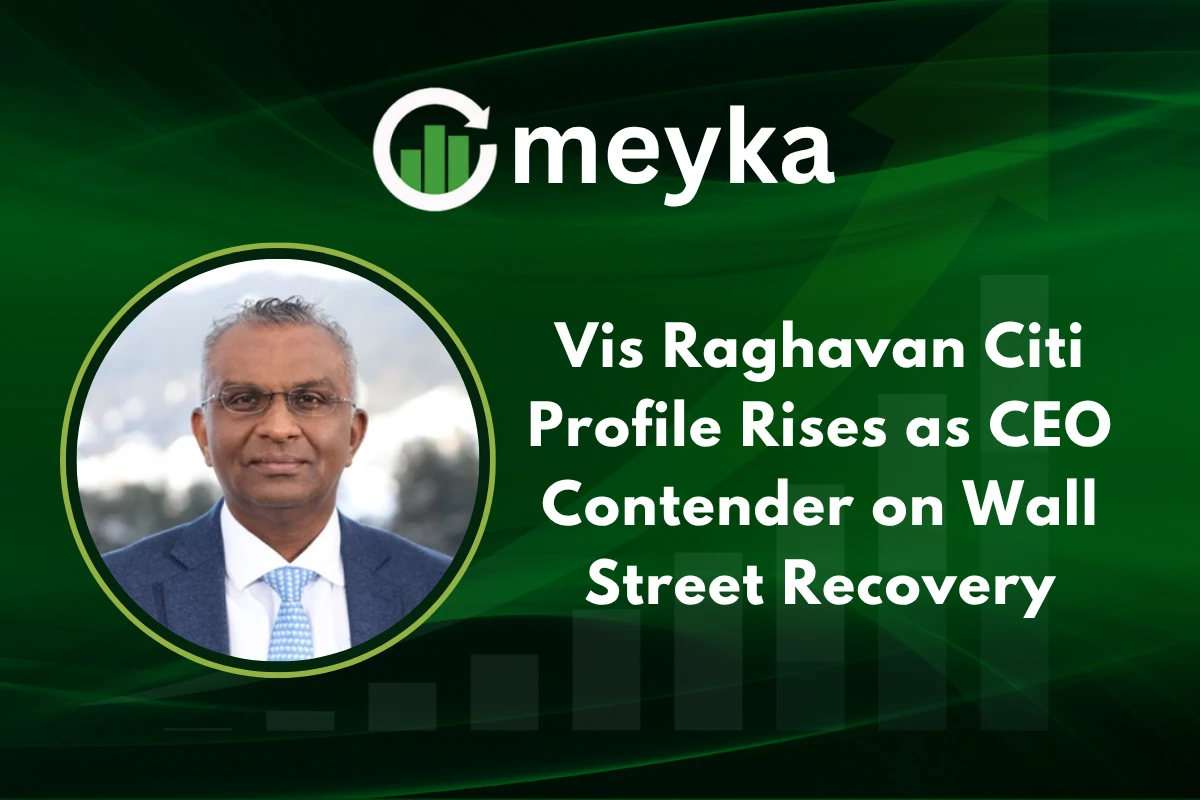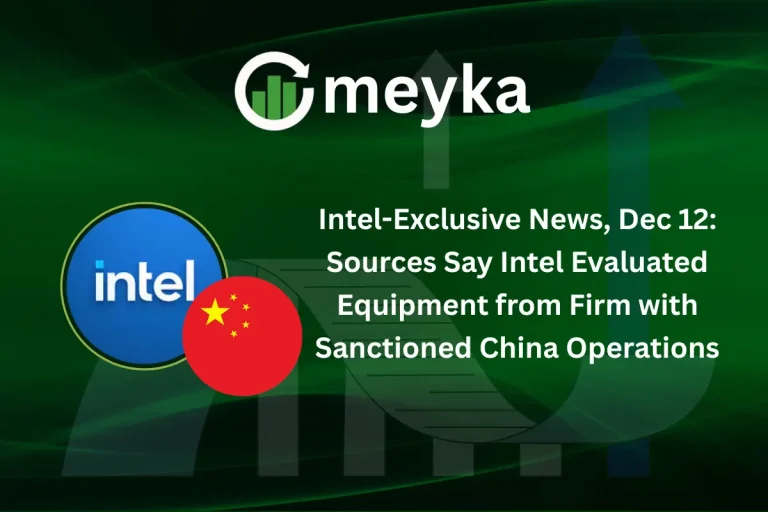Vis Raghavan Citi Profile Rises as CEO Contender on Wall Street Recovery
Vis Raghavan’s profile at Citigroup is rising quickly as the bank’s Wall Street business rebounds. The investment banking turnaround has put him center stage as a potential CEO contender. This article explains why his rise matters, which strengths back his case, and the challenges he may face as Citi weighs succession and strategy.
Vis Raghavan Citi – Background and Recent Wins
Vis Raghavan joined Citi in 2023 to reboot the bank’s investment banking arm. He moved from JPMorgan with a clear mandate: win bigger deals and grab market share. Since then, Citi has advised on major transactions and reported rising fees, signaling real momentum in the business.
That track record is the reason Raghavan’s name now comes up in boardroom succession talks.
Why is Vis Raghavan Citi’s leading CEO contender?
Raghavan’s case rests on three simple points. First, he has delivered deal wins for Citi in sectors such as healthcare and industrials. Second, his aggressive approach to client coverage has lifted fee income. Third, he has built a visible team and boosted market confidence, which has helped Citi’s shares perform well.
These moves make him a natural candidate when investors and the board think about Citigroup succession and a possible Jane Fraser successor.
Wall Street Recovery Boosts Citi’s Leadership Spotlight
Citi’s rebound on Wall Street is the context for Raghavan’s rise. As markets returned to dealmaking after a rough patch, Citi regained traction on marquee mandates. This improvement has given the bank more room to talk about leadership and global banking strategy.
Raghavan’s focus on client wins and fee growth is seen as proof that he can help scale Citi’s investment bank further.
What makes his leadership style stand out?
Raghavan is described as intense and hands-on. He pushes bankers to engage directly with CEOs and CFOs and to defend Citi’s share of client business. That style has drawn praise for results but also friction with some long-tenured staff. The trade-off is clear: faster results versus internal tensions.
Comparing CEO Contenders at Citi
Citi has several leaders with strong resumes. Raghavan is one among a short list of possible successors. His edge is recent, hard-to-ignore performance in investment banking and a reputation for generating revenue.
Other contenders may have deeper experience in retail banking, risk, or global operations. The board must weigh the mix of skills needed to lead the whole bank, not only the investment bank.
Why is Raghavan being considered now?
Because the investment bank’s rebound improved earnings and market sentiment. Boards often favor leaders who show they can restore business momentum. Raghavan’s run of deals and fee growth makes him a live option.
Market and Industry Reactions
Analysts and investors have noticed the shift. Citi’s stock has risen as the investment banking arm posted stronger fees. Market commentators say Raghavan’s moves have meaningfully improved Citi’s league-table performance in several sectors.
This market response matters for succession because share performance influences investor pressure and board timing on leadership changes.
Analysts are using AI Stock research tools to stress test scenarios and model how a leadership change could affect earnings and multiples. This modern modeling shapes investor views on succession timing and strategy.
What Challenges Could Raghavan Face?
Raghavan’s path is not without obstacles. First, internal friction is reported: some veterans feel sidelined. Second, turning investment banking strength into durable returns across the whole bank is a different challenge. Third, the board must consider corporate governance and how a CEO candidate will manage culture, risk, and global operations.
These issues will weigh heavily in any succession decision.
What are the board’s likely concerns?
The board will ask if the candidate can run global retail franchises, control risk, and maintain client trust while preserving culture. Succession is about running the entire firm, not just one business unit.
How Does Vis Raghavan Citi Align With Wall Street Expectations?
Wall Street favors leaders who lift profit margins, grow fee pools, and defend client relationships. Raghavan’s record in expanding Citi’s advisory pipeline aligns with those goals.
His emphasis on client coverage, plus ties to commercial banking, supports a holistic global banking strategy where corporate clients use Citi for multiple needs.
That alignment strengthens his appeal to shareholders focused on long-term returns.
Many analysts also run AI Stock Analysis to gauge how leadership shifts could change risk-weighted returns or capital allocation, another input into succession thinking.
The Road Ahead for Vis Raghavan and Citi
If the board begins a formal succession process, expect detailed vetting of candidates’ track records across regions and businesses. Raghavan will need to show he can unite the bank, manage talent, and sustain earnings beyond the investment bank.
A successful path to CEO requires building trust with the board, staff, and regulators. For now, momentum and results have put him in serious contention.
What should investors watch next?
Watch board commentary, quarterly results, and management changes that signal consolidation around a successor. Also watch how Citi integrates investment banking gains into broader return-on-equity improvements. Use targeted AI Stock in scans to detect shifts in sentiment and ownership.
Conclusion
Vis Raghavan Citi is no longer just an internal fix for investment banking. He has become a plausible CEO contender as Citi’s Wall Street recovery strengthens his case. His deal wins, fee growth, and visible leadership helped lift the bank’s market standing. Yet he still faces cultural and governance tests before he could realistically be the Jane Fraser successor.
The final choice will depend on whether the board prioritizes fast revenue growth or a balanced skill set across Citi’s global businesses. Investors should watch the next earnings, board signals, and any formal succession steps closely.
FAQ’S
Citi is restructuring to simplify its operations, cut costs, and improve profitability. The bank aims to streamline management layers and focus on high-growth areas like investment banking and wealth management.
Vis Raghavan Citi currently oversees the Asia Pacific region as CEO. He plays a key role in driving growth, client relationships, and expanding Citi’s presence in global markets.
During the 2008 financial crisis, Vikram Pandit served as the CEO of Citigroup. He took over leadership in December 2007 and managed the bank through the crisis.
Citi has faced challenges due to high expenses, regulatory pressures, and weaker performance in some divisions. The bank is focusing on restructuring and efficiency measures to improve returns.
Yes, Citibank is often considered “too big to fail” because of its global size and importance to the financial system. In past crises, regulators have closely monitored Citi to ensure stability.
Disclaimer
The above information is based on current market data, which is subject to change, and does not constitute financial advice. Always do your research.






